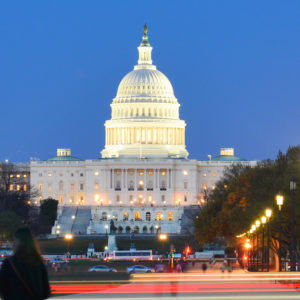Washington D.C. ranked first in jobs for the third year in a row, according to a study released Thursday, but that standing could come to an end under President Donald Trump.
Gallup rates employment trends in the largest metro areas in the country. Its analysis for last year puts the nation’s capital at the top, for the third year in a row. But Republicans may threaten the city’s lead with their promise to slash the federal workforce.
“For the third year in a row, Washington, D.C., ranked first among the nation’s 50 largest metro areas,” the analysis stated. “But 2017 may bring new challenges to the workplace dynamics of the nation’s capital if President Donald Trump and Republican congressional leaders carry out plans to drastically cut the federal workforce.”
Gallup tracks the percentage of adults who work at least 30 hours per week. The metric does not track those who are who are self-employed, unemployment, or who have dropped out of the workforce. It is primarily concerned with employment trends and does not count job satisfaction or salary levels.
“A heavy concentration of federal workers and those whose jobs are closely connected to the federal government allowed the D.C. area to weather the 2008-2009 economic crash better than most areas,” the analysis stated. “But Trump and Republican leaders in Congress are pushing for major reductions in the federal workforce.”
The recession was sparked by the subprime mortgage crisis and the financial crisis of 2007. It was followed by an irregularly long recovery. The labor market has strengthened over the last year with steady employment growth. Gallup found most of the metro areas showed solid growth over the last year.
“Budget resolutions last year in the GOP-controlled Congress called for major cutbacks, including a formula that limits agencies to one new employee for every three who leave,” the analysis stated. “Meanwhile, one of Trump’s first actions after taking office was to issue a sweeping freeze on new federal hires.”
Gallup adds some of those losses could be offset by increases in other sectors like lobbying, consulting, and jobs tied to increases in spending for the military. Trump has pledged to strengthen the military which is likely to include spending increases.
The analysis found that metro areas that include technology hubs are also among the top. It helps if the metro area includes a state capital. The next five top metro areas include a state capital and have a strong technology presence. Only three metro areas with state capitals were in the bottom 20.

